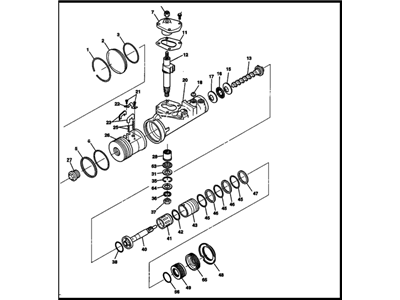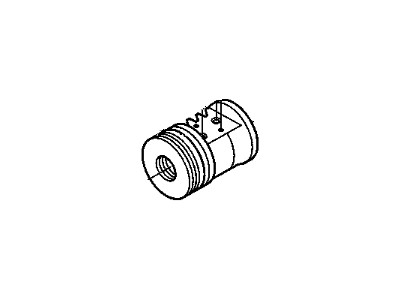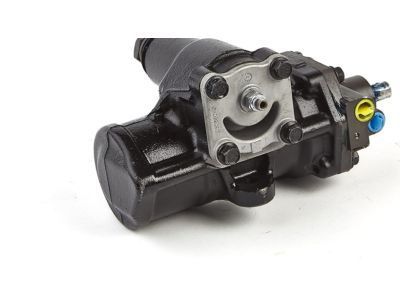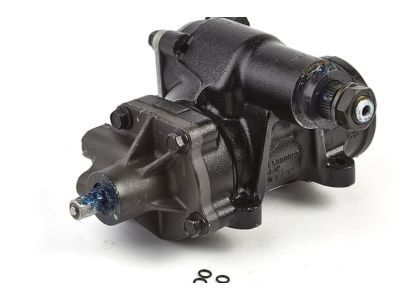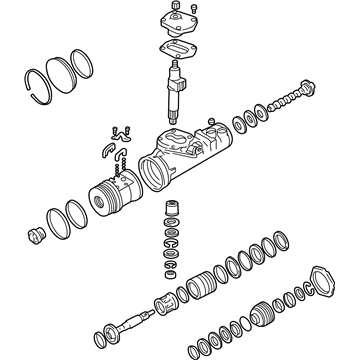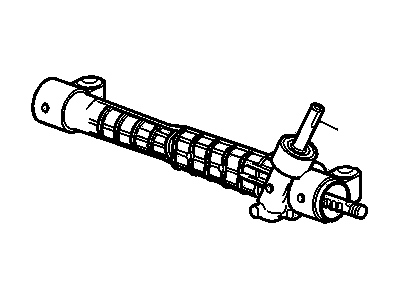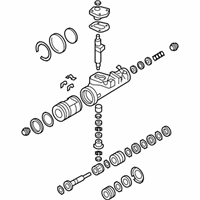
My Garage
My Account
Cart
Genuine Chevrolet Express Rack And Pinion
Steering Rack And Pinion- Select Vehicle by Model
- Select Vehicle by VIN
Select Vehicle by Model
orMake
Model
Year
Select Vehicle by VIN
For the most accurate results, select vehicle by your VIN (Vehicle Identification Number).
14 Rack And Pinions found
Chevrolet Express GEAR ASM-HYD RECRG BALL STRG
Part Number: 85603332$308.91 MSRP: $524.61You Save: $215.70 (42%)Ships in 1-2 Business DaysChevrolet Express Gear Kit,Steering (Remanufacture)
Part Number: 19133727$134.65 MSRP: $675.76You Save: $541.11 (81%)Chevrolet Express GEAR ASM,HYD RECRG BALL STRG
Part Number: 19434142$681.26 MSRP: $878.02You Save: $196.76 (23%)Chevrolet Express Rack Kit, Piston & Nut Assembly
Part Number: 7817529$338.74 MSRP: $552.11You Save: $213.37 (39%)Chevrolet Express Gear Kit,Steering (Remanufacture)
Part Number: 19330484$270.80 MSRP: $658.48You Save: $387.68 (59%)
Chevrolet Express Rack And Pinion
Each OEM Chevrolet Express Rack And Pinion we offer is competitively priced and comes with the assurance of the manufacturer's warranty for the part. Furthermore, we guarantee the speedy delivery of your orders right to your doorstep. Our hassle-free return policy is also in place for your peace of mind.
Chevrolet Express Rack And Pinion Parts Questions & Experts Answers
- Q: How to remove and install the rack and pinion on Chevrolet Express?A:For models with rack-and-pinion steering, begin by loosening the front wheel lug nuts, raising the front of the vehicle, and securely supporting it on jackstands while applying the parking brake. Remove the wheels, then mark the relationship of the intermediate shaft coupler to the rack and pinion input shaft and remove the pinch bolt from the lower end of the intermediate shaft. Detach the tie-rod ends from the Steering Knuckles, position a drain pan under the rack and pinion, and unscrew the power steering pressure and return lines from the rack and pinion using a flare-nut wrench if available, capping the lines to prevent leakage. Unscrew the mounting nuts, remove the washers, and slide the bolts forward into the frame before lowering the rack and pinion from the vehicle. For installation, reverse the removal steps, ensuring all fasteners are tightened to the specified torque values, and check the power steering fluid level, adding if necessary before bleeding the system. For models with recirculating ball steering, raise the front of the vehicle and support it securely on jackstands while applying the parking brake. Mark the relationship of the intermediate shaft coupler to the rack and pinion input shaft and remove the pinch bolt from the coupler. Position a drain pan under the rack and pinion and unscrew the power steering lines from the rack and pinion, using a flare-nut wrench if available to prevent rounding-off the fittings. Separate the connecting rod or relay rod from the Pitman Arm, support the rack and pinion, and remove the rack and pinion retaining bolts from the frame rail before detaching the rack and pinion from the frame and removing it. If installing a new rack and pinion or Pitman arm, remove the Pitman arm from the rack and pinion sector shaft. For installation, reverse the removal steps, ensuring all fasteners are tightened to the specified torque values, check the power steering fluid level, adding if necessary before bleeding the system.
Related Chevrolet Express Parts
Browse by Year
2024 Rack And Pinion 2023 Rack And Pinion 2022 Rack And Pinion 2021 Rack And Pinion 2020 Rack And Pinion 2019 Rack And Pinion 2018 Rack And Pinion 2017 Rack And Pinion 2016 Rack And Pinion 2015 Rack And Pinion 2014 Rack And Pinion 2013 Rack And Pinion 2012 Rack And Pinion 2011 Rack And Pinion 2010 Rack And Pinion 2009 Rack And Pinion 2008 Rack And Pinion 2007 Rack And Pinion 2006 Rack And Pinion 2005 Rack And Pinion 2004 Rack And Pinion 2003 Rack And Pinion 2002 Rack And Pinion 2001 Rack And Pinion 2000 Rack And Pinion 1999 Rack And Pinion 1998 Rack And Pinion 1997 Rack And Pinion 1996 Rack And Pinion

